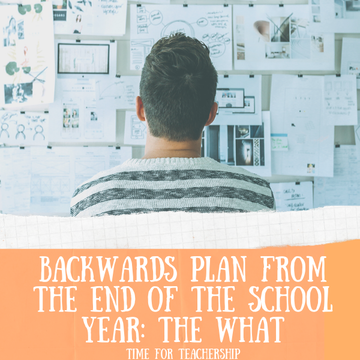|
Some schools already know they are not going back to in-person teaching until next school year. Others are still unsure if they will return to classrooms to finish out the school year before summer break. Regardless of whether you’re planning for the last few weeks of the school year or you’re already thinking about next year, it’s helpful to have an approach that ensures you keep the end in mind when you plan. This ASCD white paper summarizes McTighe & Wiggins’ Understanding by Design (UbD) framework for backwards planning. Simplified, it’s basically: What do you want students to achieve?; How will you know students have achieved these goals?; What learning experiences will best support them to get there? So, with that in mind, let’s consider what you want students to achieve by the end of the year. Ask yourself: What are the most important things I want my students to know or be able to do by the end of the year? A couple of quick notes for teachers backwards planning the rest of the 2019-2020 school year: If your answer is related to something you already began teaching earlier this year, your plan for the last few weeks of school may be to put the finishing touches on that particular skill or content understanding. If your answer is related to new content or a new skill you have not yet taught this year, try to be realistic in how much content you’ll expect students to understand or to what degree students will be able to hone a new skill, given the short window of time you have left. I always emphasize depth over breadth. Choose 1-2 key content understandings or 1-2 skills (more or less, depending on how much time you have left in the school year) that will be transferable to next year’s content or to other disciplines. For example, I believe the skill of being able to analyze was one of the most transferable skills for students across content areas. It’s also one of the skills my students struggled with the most, so I would try to focus my attention on that. If we are getting really particular here, I would then write out a definition of what mastery of this skill or content understanding will look like. I do this because I think it is helpful for me as a teacher/curriculum designer and my students to understand exactly where we are going. I like to do this using one of these rubric templates. Once you have defined mastery for whatever it is you are teaching, you will then need to decide how students will demonstrate mastery via an assessment task. ASCD explains what McTighe & Wiggins say these summative performance tasks should include, stating the following: When someone truly understands, they
They also suggest an essential question to engage students in making meaning of content within a particular context. This question will drive your lesson planning and students’ focus during the unit—every learning experience should be aligned with the goal of helping students address the essential question. An additional note on alignment: it is important to align your instructional priorities (the goals you stated as a result of the previous question) with your assessment. If a major content understanding or skill is not assessed, you may want to ask yourself why you’re teaching it. Remember: less is more; depth over breadth. Once you have decided on your final performance task to assess student mastery, you can then go back and insert some formative assessments, like checkpoints along the way, to make sure students are mastering the smaller components or steps within each major conceptual understanding or priority standard/skill in the unit. After answering these first two questions (what you want students to achieve and how you will know they achieved it), you will need to plan out the learning activities you’ll use to help students acquire the content and skills. This third question deserves it’s own post, so to be continued later this week…
1 Comment
|
Details
For transcripts of episodes (and the option to search for terms in transcripts), click here!
Time for Teachership is now a proud member of the...AuthorLindsay Lyons (she/her) is an educational justice coach who works with teachers and school leaders to inspire educational innovation for racial and gender justice, design curricula grounded in student voice, and build capacity for shared leadership. Lindsay taught in NYC public schools, holds a PhD in Leadership and Change, and is the founder of the educational blog and podcast, Time for Teachership. Archives
May 2024
Categories |





 RSS Feed
RSS Feed